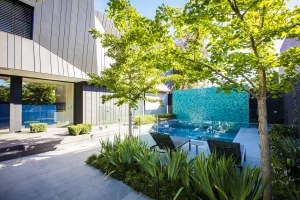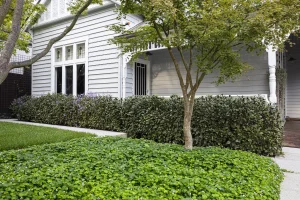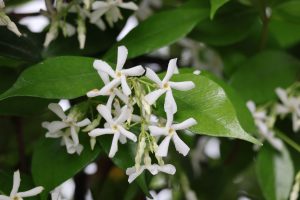Boston Ivy, botanically known as Parthenocissus tricuspidata is a vigorous, fast-growing, deciduous climber with three-lobed, deep green leaves. In autumn, the leaves transform into brilliant shades of burgundy, red and orange before falling for the winter.
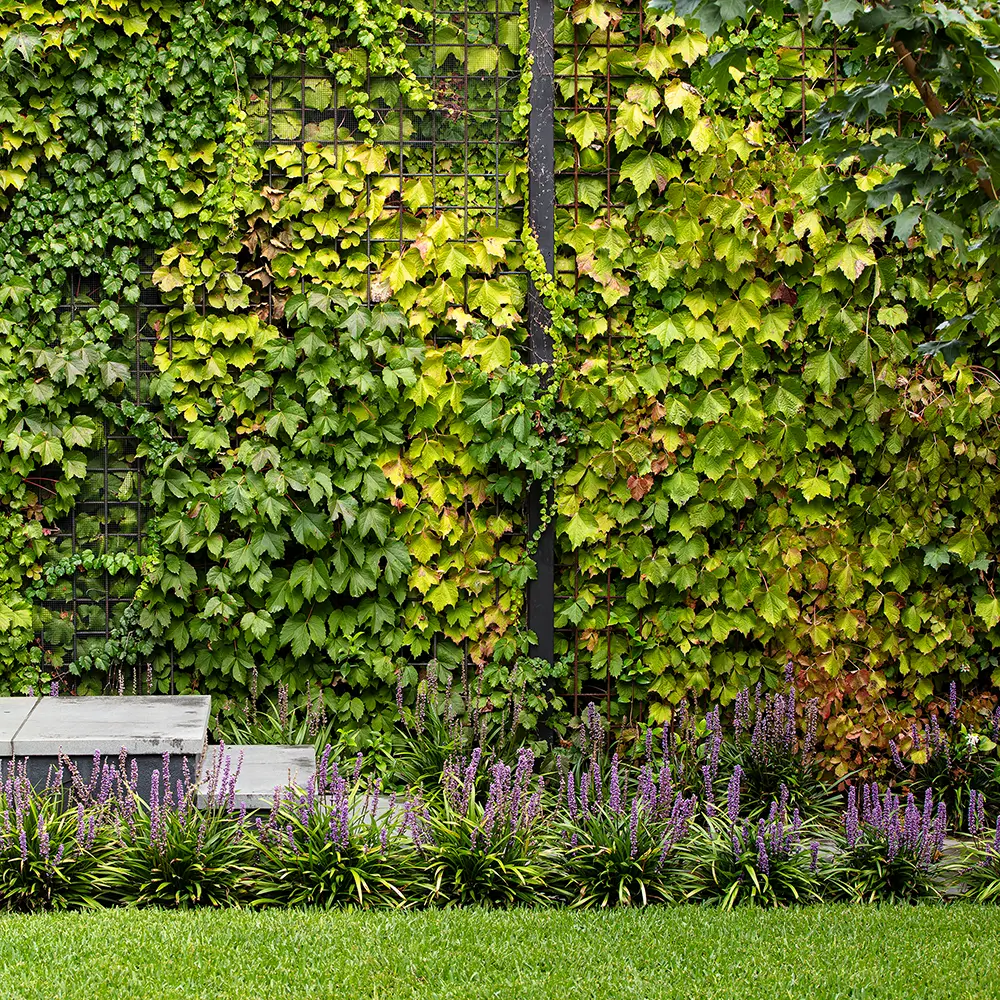
Landscape uses
Boston Ivy can be used as a climber or a groundcover – but it’s primarily used as a climber. We like using Parthenocissus tricuspdata to climb walls, fences, trellises, arbours and pergolas. When wholly covered, it creates a beautiful carpet of foliage. We used Boston Ivy along our East Malvern project’s fence and the open pergola in the pool area.
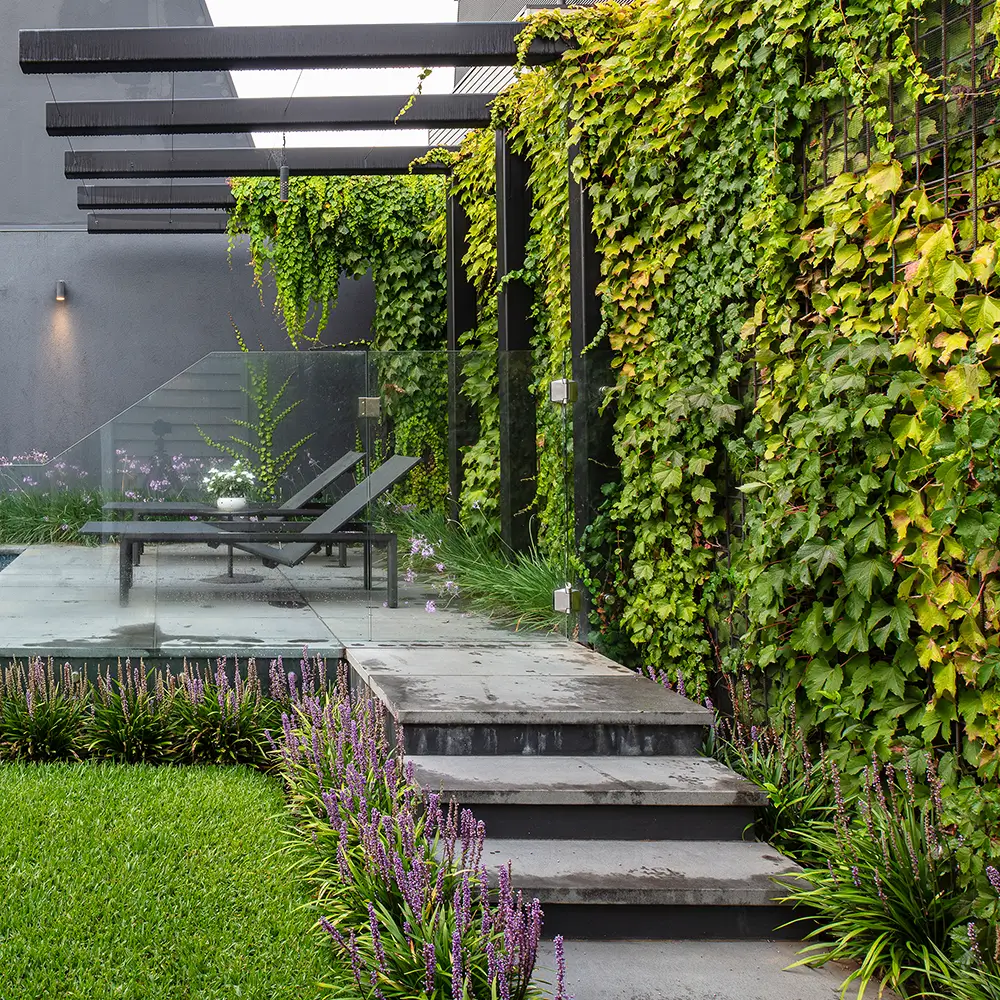
How to plant
Plant in full sun to part shade in average, well-drained soil. It can grow in full shade, but you won’t receive the best autumn colour like you would if planted in full sun. It’s important to note that Boston Ivy’s tendrils are adhesive-like, so it will stick to many surfaces on its own. This means you don’t require a support structure when planting (we often like to use a product called concrete mesh when support is needed). Still, it can also make it difficult to remove in future – so we recommend ensuring that you’re happy for the location to be permanently covered before planting. The tendrils won’t actually penetrate and damage the wall itself, but it’s near impossible to remove it without some of the surface coming with it too. You can expect Boston Ivy to grow to approx. 15m high and 3m wide – space pots accordingly.
Care and maintenance
While Boston Ivy is super easy to grow, it can get out of hand if you don’t regularly maintain it. Ensure that you’re trimming it regularly, so it stays within its intended location. Once established, it’s drought-tolerant.
